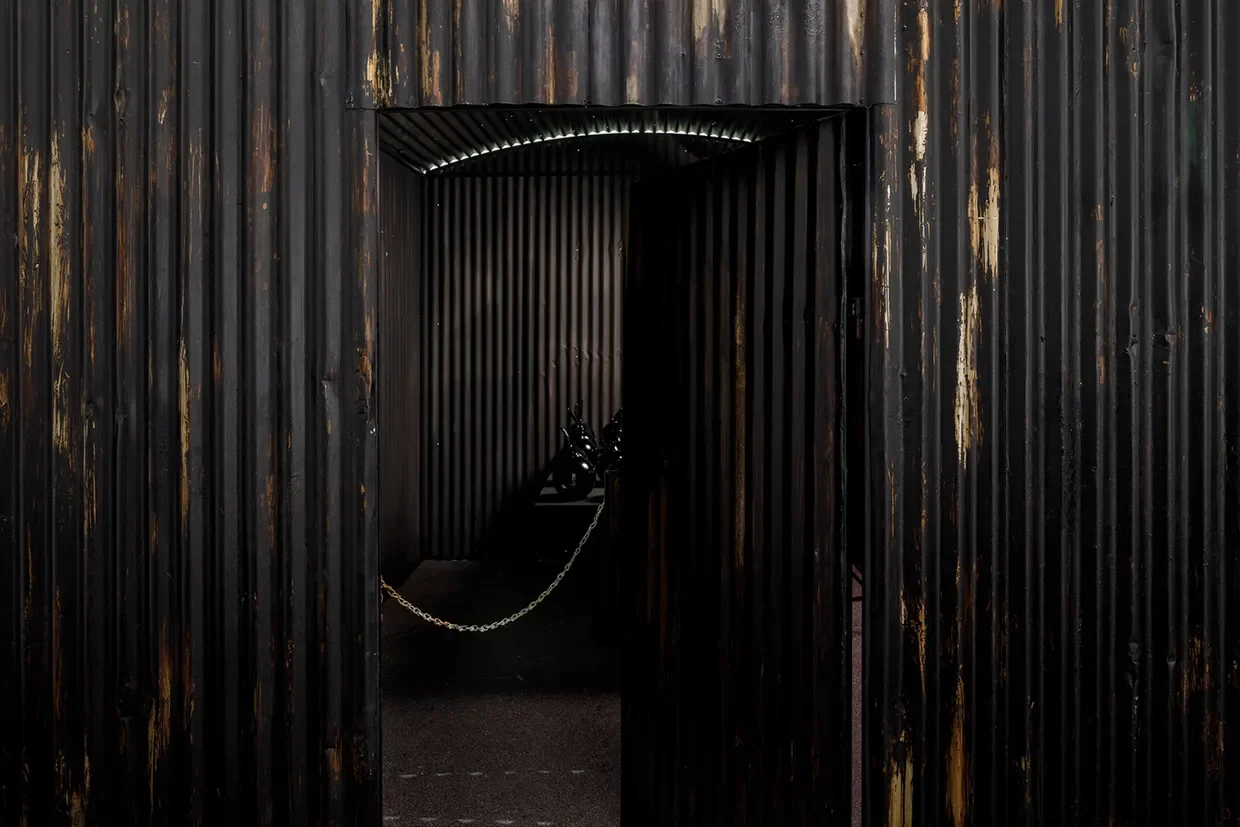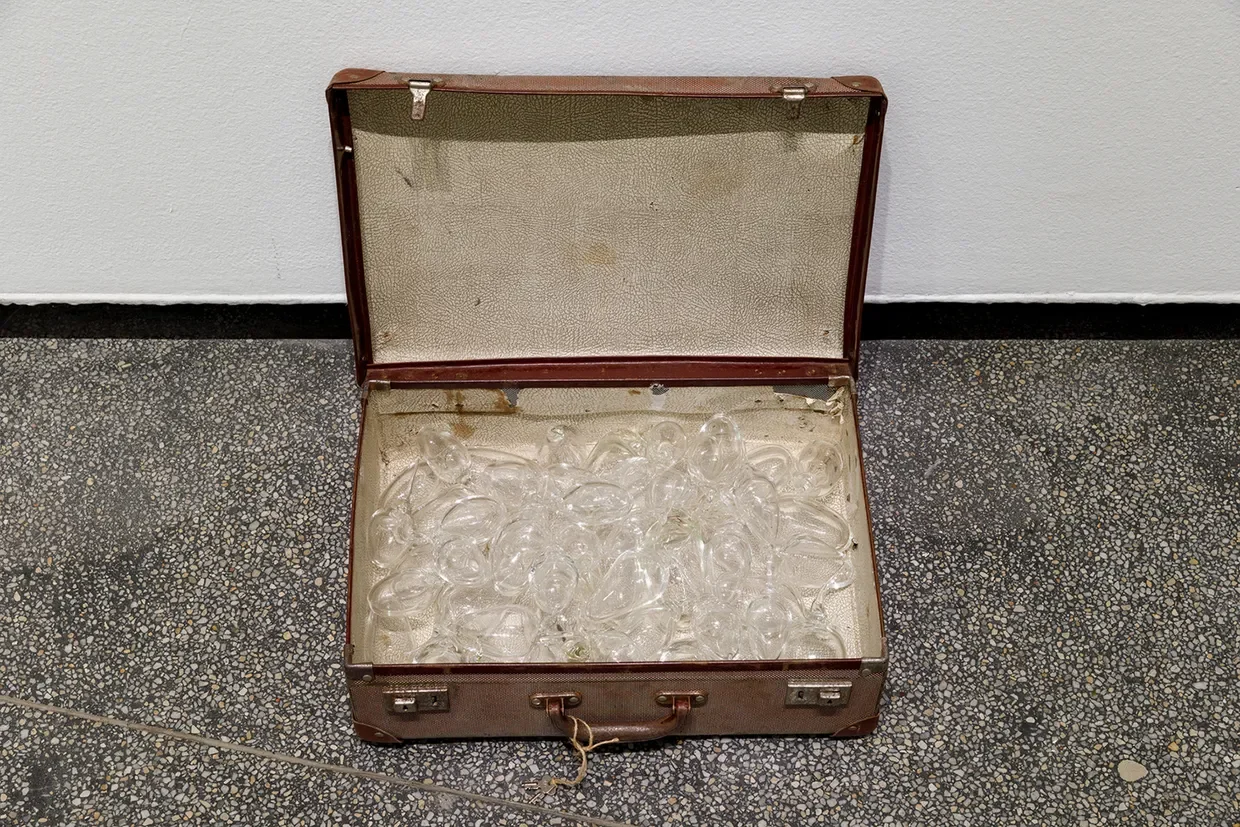Yhonnie Scarce
Yhonnie Scarce is an Indigenous Australian artist who frequently employs the use of glass blowing and instillation as a means of spreading awareness and highlighting the significant impact of colonialism on Aboriginal communities. (Wilson 2019)
Her works form a political lens from which the raw and devastating realities her people faced become clear and confronting. The stories and messages told within her works to help to express the struggles faced by so many.
“I used to feel weird about being born in Woomera, but now I have a sense of ownership. I know about this history and what happened there.” (Scarce 2019)
She makes their voices heard. She works to combat the media control and misinformation out there and strives to peel back the layers to reveal the truth. Her work aims to prompt authorities to take actions for the reconciliation for Indigenous Australians, and to help campaign for a greater future.

Weak in colour but strong in blood, 2014, Artwork by Yvonne Scarce, Photograph by Andrew Curtis
‘Only a mother could love them’, 2016
Only a mother could love them, 2016, Artwork by Yvonne Scarce, Photograph by Andrew CurtisScarce’s artwork, ‘Only a mother could love them’ reflects the horrific impact the radiation from the nuclear testing on the Wommera restricted area had upon her people.
The work, at first appears almost endearing as the glass forms are wobbly and imperfectly rounded, reminiscent of newborn babies. Then, when contextualized one then notices the traumatic punctures upon the forms. They mirror the devastating deformities babies succeeding the radiation exposure were inflicted by. The forms prompt an empathetic, maternal feeling within viewers, prompting a desire to protect them. She recognizes the need for humanity to reflect and understand the past in order to facilitate a more stable, socially sustainable world to continue into the future.
(Monash University Museum of Art 2022)

Missile Park, 2021, Artwork by Yvonne Scarce, Photograph by Andrew Curtis
‘Missile Park’, 2021
Missile Park, 2021, Artwork by Yvonne Scarce, Photograph by Andrew CurtisScarce frequently incorporates found objects from around her country into her practice. She uses them to form intimately scaled assemblages as a means of investigating and communicating her ideas. The materials for her ‘missile park (2021)’ instillation are salvaged from a scrap yard, otherwise to be discarded. The metal is crafted into 3 varying sheds, perforated and dim and disintegrating, the dark interior a mirror to the darkness of the time and events to which she references. The structures become sculptural and communicative. The sourcing and working with these materials not only connects her both personally and culturally to her works, but it also demonstrates a strong conscious for environmental sustainability. (Browning 2022)

Missile Park, 2021, Artwork by Yvonne Scarce, Photograph by Andrew Curtis
‘The day we went away’, 2004
The day we went away, 2004, Artwork by Yvonne Scarce, Photograph by Andrew CurtisWhat inspires me about Scarce’s work in particular is the way in which she uses exhibition design and the materiality of her works to form part of the visual language and to communicate her messages. In her work ‘The day we went away’ (2004) she reflects upon the defenselessness and vulnerability of Indigenous Australian Children and their families as a result of the Stolen Generations.
The work consists of a child sized found suitcase filled with 40 delicate glass forms. It sits bare, unprotected on the gallery floor where it may easily be damaged by visitors. Such fragility and helplessness refers to those children. When understood the work becomes truly emotional. (Browning 2022)
In the future I want to incorporate Scarce’s dedication to ensuring every element of her works are conceptual, from the materials to the placement when presented. I also want to try and incorporate more used materials within my work.

The Collected, 2010, Artwork by Yvonne Scarce, Photograph by Andrew Curtis
INSPIRATION
I was first introduced to Scarce’s work in 2021 when I visited her exhibition at the time at ACCA. I was struck by the level of precise symbolism and how strong the visual narrative was throughout her work.
Her use of found objects particularly was a source of inspiration to this project. Making me contemplate how valuable seemingly insignificant items can become when meaning is layered behind them.


